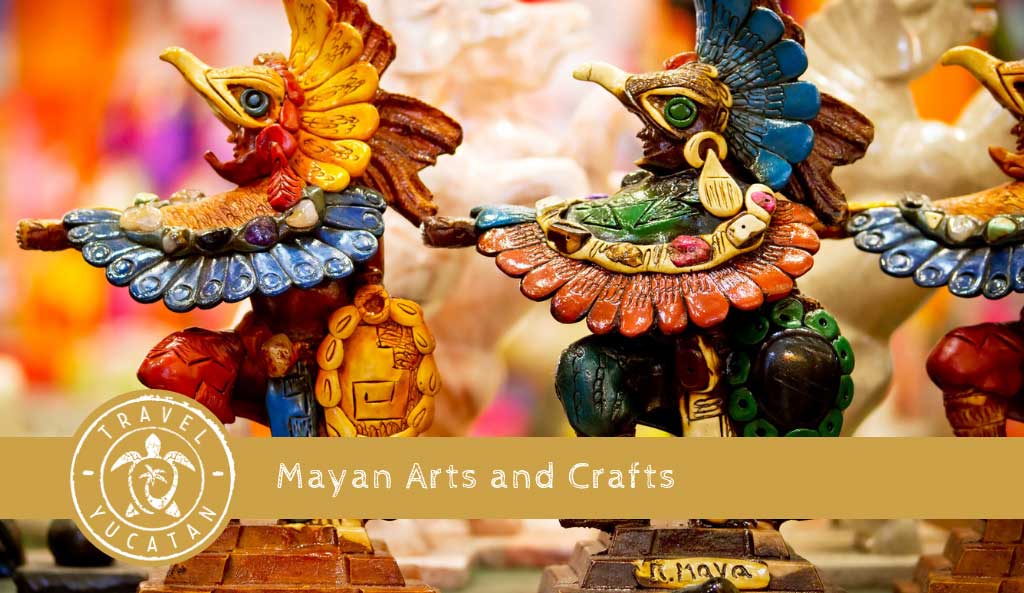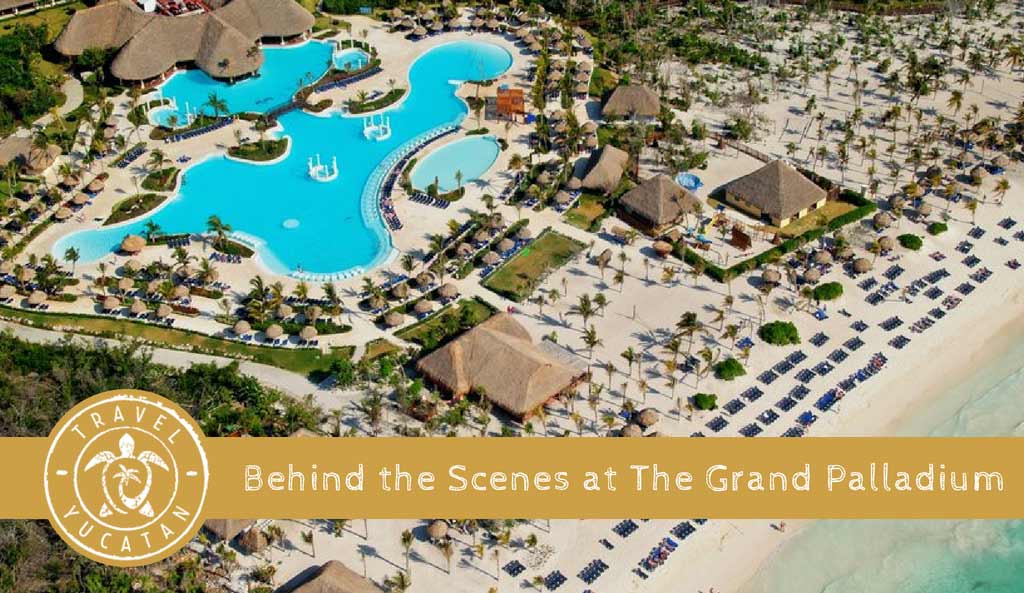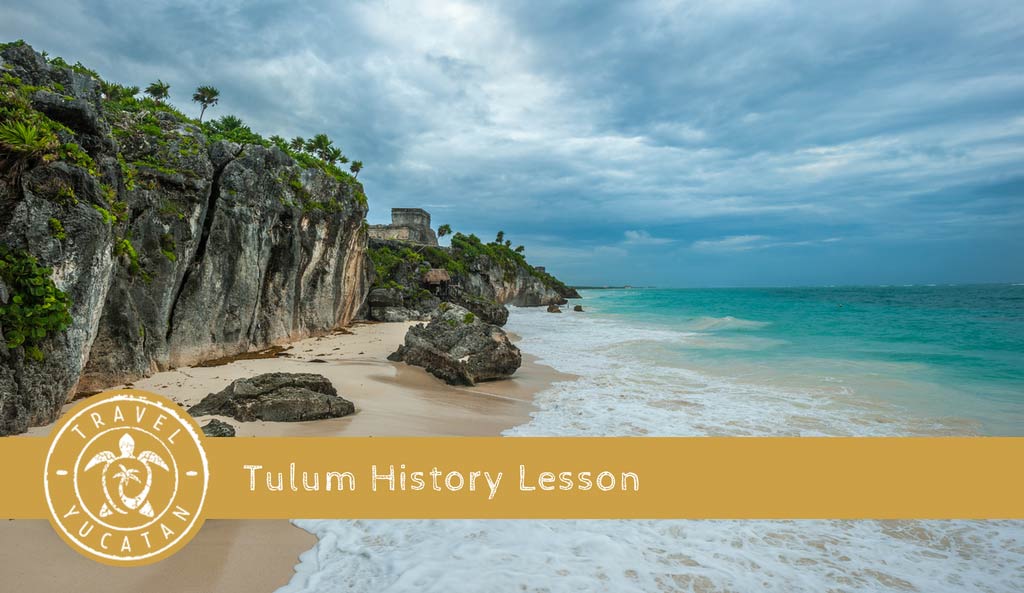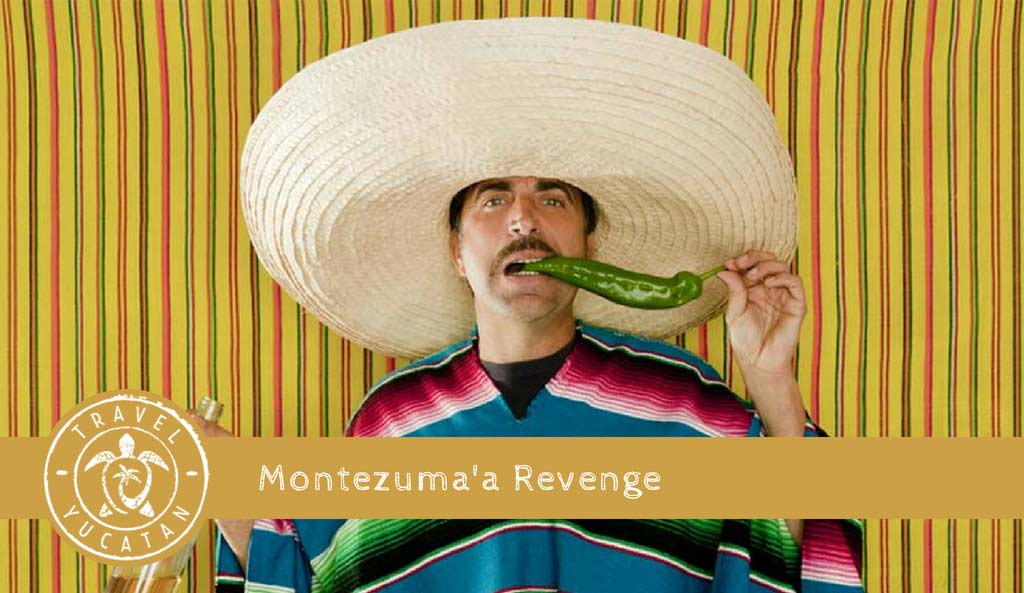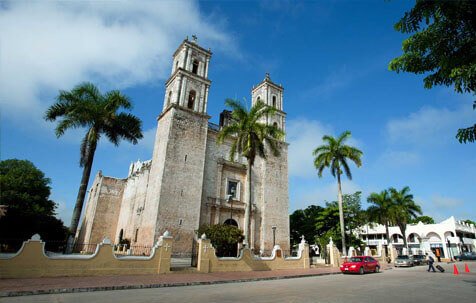Manufacturing in the Mayan world differs largely from western cultures in that consumer goods are independently produced on a vast scale in the Mayan world where as in western cultures the manufacturing is consolidated [in factories].
Family run enterprises and even individual entrepreneurial initiatives are quite popular means for earning a living especially in geographic areas that have absolutely no industrialization what so ever. Other than farming there are no other means of making a living other than producing some form of marketable product.
To this end tourism plays a large part in the economy of the Mayan world because many products are created simply for this market. These goods also find there way into stores all over the world and exporting plays a large roll.
ORIGINALS – REPRODUCTIONS – MASS PRODUCING
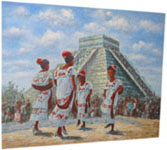 What you find in the world of Mayan arts & crafts is a wide range of items from a multitude of artistic genres.
What you find in the world of Mayan arts & crafts is a wide range of items from a multitude of artistic genres.
But you could classify them into three categories; original one-of-a-kind pieces, low quantity reproductions of an original Mayan piece from antiquities and mass-produced assembly line products.
In the one-of-a-kind category you would find personal items and religious artifacts which are generally original pieces or part of a minor collections of original pieces.
ORIGINALS
Being an original artist in Mexico does not pay well. Ask a master carver why he is producing knock-offs of traditional antiquities instead of original work and he will tell you that he has a family to feed. I once asked Juan, a master carver from a town near Merida to carve me a special toad implanted with jade I had found at Tonina. He was stunned by the proposition. Nobody had ever asked him to carve an original piece. He did not even know how much to charge.
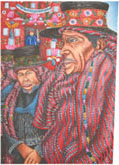 We spent an afternoon with a family of carvers near Coba one day chatting about the craft trade. They lamented that even doing quality reproduction of antiquities was time consuming and since they could not price themselves out of the marketplace regardless of how much time they spent on an item they could only get so much money for it. The extra time spent on their carvings was done out of personal pride and excellence in workmanship. They overproduce their work and take the loss to be competitive with the mass produced stuff.
We spent an afternoon with a family of carvers near Coba one day chatting about the craft trade. They lamented that even doing quality reproduction of antiquities was time consuming and since they could not price themselves out of the marketplace regardless of how much time they spent on an item they could only get so much money for it. The extra time spent on their carvings was done out of personal pride and excellence in workmanship. They overproduce their work and take the loss to be competitive with the mass produced stuff.
Original items can be found in every craft genre. Sometimes the artists loves an original piece so much they will make a number of similar items, all different but with the same style. In some cases an original item sparks another then another then a whole village is making the thing.
Some items sold in craft stores are not actually arts or crafts at all but actual clothing, household items or religious artifacts created for traditional Mayan ceremonies. Asked how Mayan ceremonial gear ends up in a collector’s store is easy, missionaries. You see, as the missionaries travel from village to village they educate the Maya on how evil their traditions are and that they must repent. Repenting means getting rid of all of their traditional Mayan beliefs. This includes any ceremonial artifacts and even the clothing they wear. This practice is going on as you read this.
In some circumstances entire Mayan communities are forced to move and relocate to a different area. Sometimes they do not want to bring all their things with them so they sell some of their belongings.
Mayan people experiencing dire economical circumstances are forced into selling valuable artifacts to simply survive. These artifacts could be huipils, masks, incense altars or anything the family treasured.
Like other families, when the elderly pass away, some things lose there meaning and hold no value to the new owners. In a society encroaching more and more towards color TV and cell phones having a ceremonial huipil or jaguar mask is slowly losing its appeal.
Less and less authentic Mayan traditional artifacts are available now and what is left is steadily rising in price. There are so many imitations now that one does need to be wary about who you are buying from and what the real story is.
REPRODUCTIONS
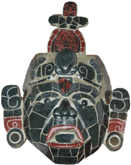 If you owned a pottery factory, chances are, you would make what sells. This is indeed the case as the market drives what is made in Mexico.
If you owned a pottery factory, chances are, you would make what sells. This is indeed the case as the market drives what is made in Mexico.
Carvers use templates over and over again to produce the same piece with different wood grains. Stone carvers work from a picture for detailed work. Weavers work from an example, pictures or even an imprinted design in their head.
Some artisans cooperate, forming a collective with government incentives. Many run family operations and lots of people work part-time making things to sell. It is not uncommon to find a man doing embroidery sitting behind a store counter.
Reproductions are usually of some Mayan antiquity found in a museum some where. Many artisans have never seen the original item they are reproducing and have only seen pictures and other’s examples. Quality varies as does materials and prices.
There are artists producing amazing works. They may not be original but as accurate reproductions these artisans create with the same aptitude and zeal as their ancestors before them.
MASS PRODUCING
Husband overheard talking to his wife walking up 5th Avenue in Playa del Carmen; ” Honey, don’t you have enough of this junk already!”
Okay, we admit it, we bought a sombrero one-day. We felt it would not be right to be in Mexico and not own a sombrero. So we bought one, took it home, noticed a little tag…Made in China! What gives?
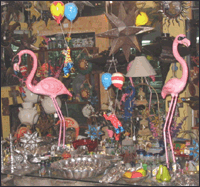 Yes there is a cheaper place to get things made than Mexico and in fact there are a lot of places in the world now making junk, oops I mean consumer goods. I mean look at your average dollar store.
Yes there is a cheaper place to get things made than Mexico and in fact there are a lot of places in the world now making junk, oops I mean consumer goods. I mean look at your average dollar store.
Junk is imported into Mexico now and sold along with Mexican made items. If there is no tag you will not know the difference. This is nothing new as there have traditionally been cheaper imports from more southern countries in Latin America but now this import of cheap goods into Mexico has grown significantly in recent years with the growth of free trade.
The price for junk [junk is used here to identify products made for souvenirs, T-shirts, brickerbrak and cheap things] can vary considerably depending on where you buy it. The further away from the tourist zones the cheaper the item gets. There can be a considerable markup on some items.
Vendors selling junk are the most ruthless. Not all are honest and will tell you anything to make a sale. For example a vendor selling cheap mass produced blankets from Guatemala at an exhorbitent markup can try to persuade you that the item is a delicately hand woven textile from a village of expert Mayan women who spend days laboring over every piece. Not true. In fact the blanket was made on a machine, in a factory by a machine operator named Hector, who hates his job.
Of course there is nothing forcing you to buy anything and vendors are really no more dishonest than store vendors anywhere else in the world.
ADVICE FOR BUYING MAYAN ARTS & CRAFTS
There are different kinds of stores selling Mayan arts and crafts in the Yucatan Peninsula. They are:
- Upscale galleries selling expensive original items.
- Designer stores sells a mixture of kiche imported and Mayan goods.
- Collector stores selling authentic Mayan items moderately priced.
- Nice Tourist shops selling interesting and unique things.
- Mexican stores [away from tourist main zones].
- Markets [along highways, at ruin sites and cenotes/beaches].
- Cabanas [a house on the highway or road to Coba etc.].
- Street Stall [a booth or table on a street].
- Walking Sales Person [Person on beach.]
The trend in stores now is “fixed price”. This is exactly what store employees are starting to say now all over the place. Fixed price, fixed price, I can’t change it.
Bargaining with the vendor depends on the circumstance. Vendors in the countryside are way more open to bargaining than vendors in the tourist zones.
The best person to talk to is the store-owner, who is usually either in the store or close by. In some circumstances, if need be, you can return and speak with the store-owner directly. The store-owner will usually know something about the article you are interested in. This would be where it was made, its significance, materials used and other related information.
In many “galleries” you will see items that you will not see anywhere else in the Yucatan Peninsula. Many vendors are travelling in the Mayan world and bringing back new lines of crafts. Some stores specialize in carrying original pieces or a mixture of original and other interesting things.
